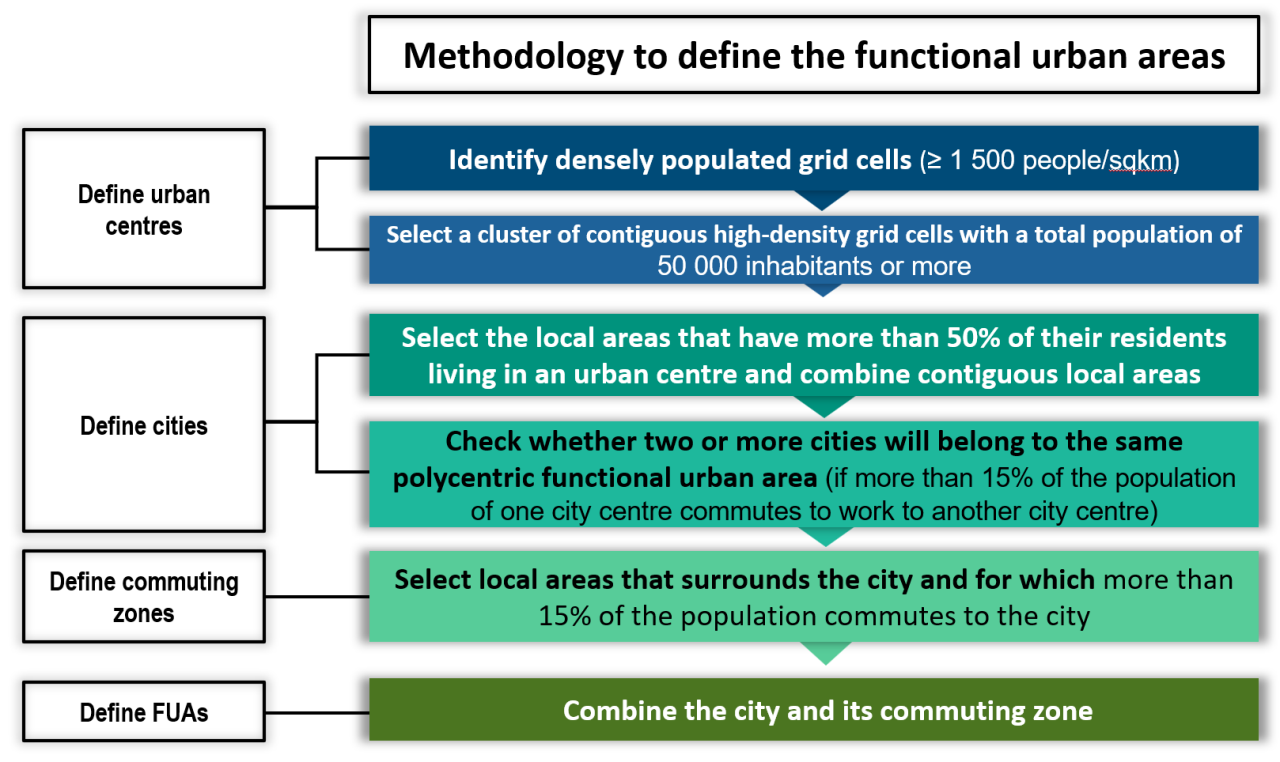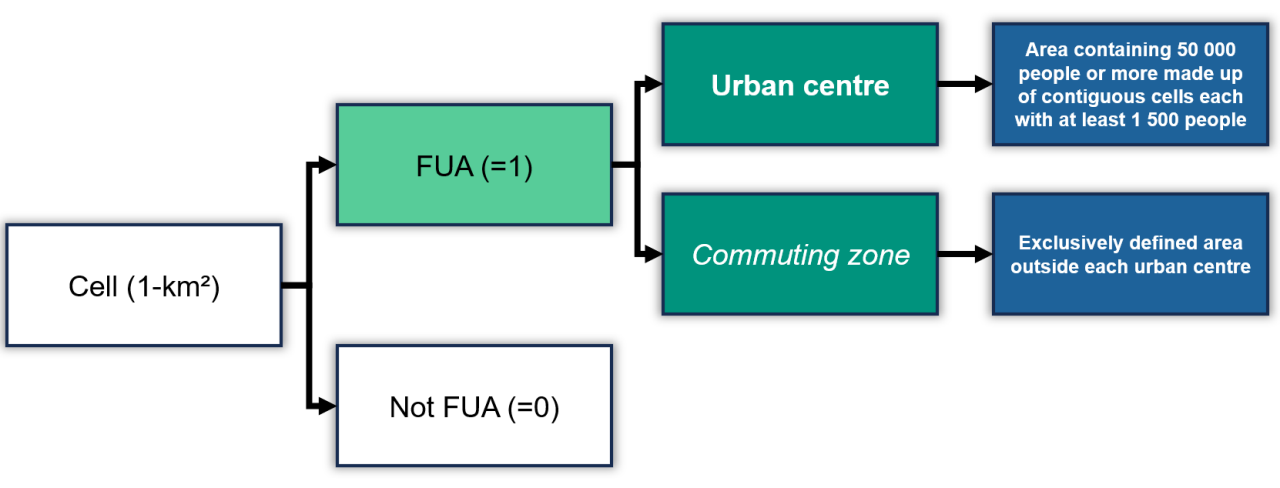The OECD definition of functional urban areas (FUAs) capture meaningful connections between cities and their surrounding areas. The degree of urbanisation provides a definition of cities based on population density and cell contiguity. The FUA definition expands city boundaries to include areas economically connected through workplace commuting. The definition uses population density and travel-to-work flows as key information.
OECD Definition of Cities and Functional Urban Areas
Cities concentrate a considerable share of population and economic activity in OECD countries. Comparing cities across countries requires appropriate geographical definitions that also take into account the areas of influence of cities.
Defining cities and functional urban areas

Share of population by size of cities
The OECD cities and functional urban areas database publishes indicators for FUAs. The following links provide the list of FUAs by country and the boundaries shapefiles for cities and for FUAs.
Defining cities worldwide
Estimated Functional Urban Areas (eFUAs) offer a way to draw commuting zones around city centres for countries with no available commuting flow data. eFUAs do not follow administrative borders and are available worldwide. This document details the methodology. The boundaries for about 9,000 eFUAs of at least 50,000 inhabitants worldwide can be access here. The report Cities in the World: A New Perspective on Urbanisation presents comparative analysis of FUAs worldwide using this definition.

Related data
-
DashboardBuilding our understanding of the COVID-19 crisis and recovery in regions. The health, economic and social impacts of the crisis have been uneven across and within countries – and recovery from the crisis, so far, has also been uneven. Understanding the spatial dimension of the recovery and developing place-based policies is vital to support recovery in all regions.
-
IndicatorTourism flows includes international arrivals and departures as well as nights spent in accommodation by visitors.
-
-
IndicatorTourism direct GDP corresponds to the part of GDP generated by all industries directly in contact with visitors.
-
IndicatorTourism receipts and spending are made up of travel credits and debits.

